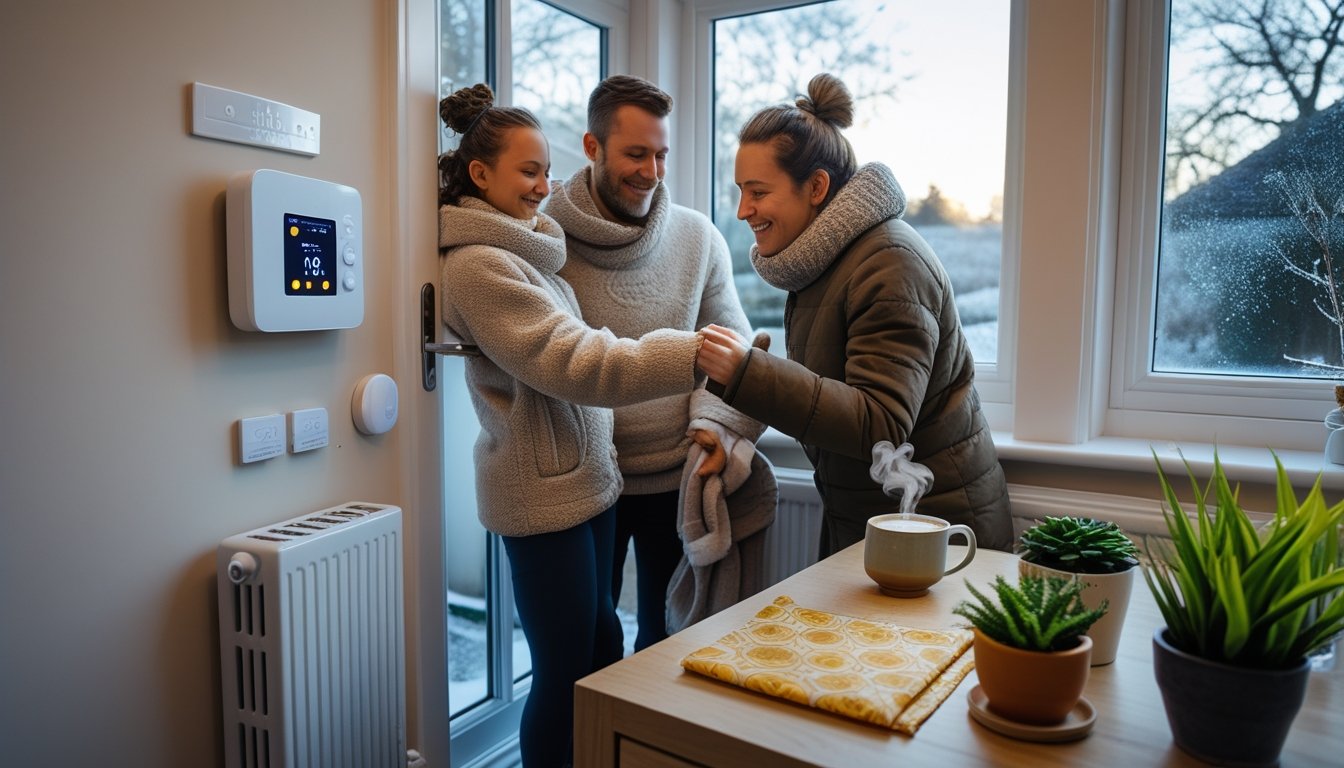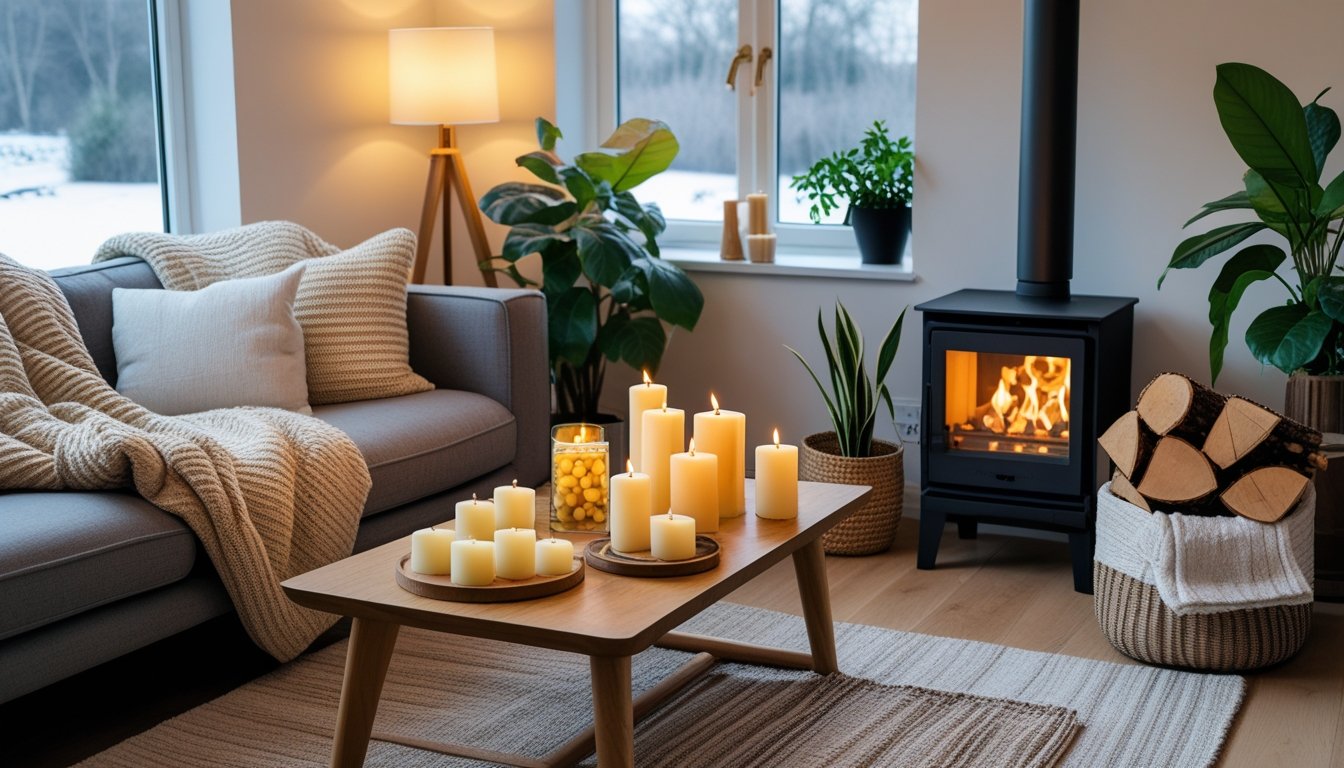Late updated: 17 Jul 2025 13:07
Written by: Eleanor Hartman
Eco-Friendly Tips For UK Winter Home Preparation: Sustainable Practices For Cosy Living
As the winter season approaches in the UK, preparing our homes in an eco-friendly manner becomes increasingly important. Emphasising sustainable practices not only enhances our living conditions but also reduces the carbon footprint and saves on energy bills. The chilly months need not be a burden if we adopt the right strategies, making every drop of energy count and keeping our environment in mind.

We're diving into practical, eco-friendly tips that ensure your home stays warm, comfortable, and energy-efficient throughout winter. From enhancing insulation to employing smart heating solutions, these insights are tailored to guide you towards a sustainable winter haven. Let's explore how small adjustments can lead to significant positive impacts on both our comfort and the planet.
Key Takeaways
- Adopt eco-friendly home preparation to save energy.
- Sustainable practices keep our homes warm and efficient.
- Simple steps can significantly lower our carbon footprint.
Eco-Friendly Home Preparation Essentials

Preparing our homes for the UK winter months not only ensures comfort and warmth but can also be done in an eco-friendly way. By focusing on insulating our homes, sealing draughts, maintaining structures, and choosing eco-conscious materials, we contribute to energy efficiency and sustainability.
Insulating Walls, Roofs, and Floors
Proper insulation is fundamental for an eco-friendly home. We should consider materials like sheep's wool and recycled denim, which offer excellent thermal performance and minimal environmental impact. Insulating walls, roofs, and floors helps retain heat during the winter, ultimately reducing energy consumption and heating costs.
Next, it's essential to identify areas in need of insulation. Loft spaces, walls (including cavity walls), and underfloor areas are common places where heat escapes. By addressing these areas, we can ensure that our homes remain warm and energy-efficient throughout the colder months.
Sealing Draughts and Preventing Heat Loss
Draught-proofing is a simple yet effective way to prevent heat from escaping our homes. We can start by checking for gaps around windows, doors, and even chimneys. Using materials like draught excluders, silicone sealant, and foam strips ensures an airtight seal.
It's important to remember that draught-proofing not only keeps our homes warm but also reduces our reliance on heating systems. This helps us lower our energy bills and minimise carbon emissions. By identifying and sealing these gaps, we contribute to a more eco-friendly living environment.
Clearing Gutters and Protecting Timber
Winter months bring increased rainfall, which can lead to gutter blockages. Regular cleaning of gutters prevents water overflow and potential damage to the home's structure. It's equally important to check and treat exposed timber that might suffer from moisture-related issues.
Natural preservatives, like linseed oil or borates, can be used to protect wood from rot and insect damage. These eco-friendly treatments ensure the longevity of our timber structures while maintaining a green approach to home care. A little upkeep goes a long way in preserving our home’s integrity.
Eco-Conscious Window and Door Solutions
Windows and doors are critical in maintaining an eco-friendly home. Double or triple glazing options dramatically reduce heat loss. When replacing windows, choosing materials like wood or uPVC that come with good energy ratings is beneficial.
We can also consider installing heavy or thermal curtains to conserve heat. These have the added advantage of providing extra insulation. Thoughtful use of coverings and selecting energy-efficient glazing are steps we can take to ensure our home remains cozy without excessive energy usage.
Sustainable Ways to Stay Warm Indoors
Staying warm during the winter months doesn't have to mean sacrificing sustainability. By making smart choices with clothing, furnishings, and heating methods, we can maintain a cosy indoor environment while being eco-friendly.
Layering Your Clothing and Using Slippers
Layering is a simple and effective way to retain warmth. By wearing multiple thin layers, such as thermal tops and woollen sweaters, we can easily regulate our body temperature. Materials like wool and bamboo are excellent as they trap heat without making us overheat.
Let's not forget our feet; investing in a pair of insulated slippers can make a significant difference. Slippers with natural wool or fleece linings provide warmth and comfort, ensuring we remain snug while reducing the need for excessive heating.
Utilising Soft Furnishings and Rugs
Soft furnishings play a critical role in creating a warm, inviting space. Draping thick curtains over windows helps to insulate rooms by blocking cold air and retaining heat.
Adding cushions and throws to our sofas not only enhances comfort but also creates additional layers to prevent heat loss. Placing rugs on cold floors, especially in areas with hardwood or tile, adds insulation and a cosy touch. Rugs can prevent heat from escaping through the floor, keeping rooms warmer and reducing our reliance on central heating.
Utilising Energy-Efficient Heating Methods
Using energy-efficient heating systems is essential for maintaining warmth sustainably. Modern smart thermostats allow us to control heating precisely and reduce energy consumption. By keeping the thermostat lower at night and using zoned heating, we can conserve energy effectively.
Consider installing radiator reflectors to ensure warmth is directed into the room instead of being lost through walls. We should also explore renewable energy options like heat pumps or biomass boilers. While the initial investment may be higher, these systems typically offer significant savings and environmental benefits over time. With careful planning and implementation, we can enjoy a warm and comfortable winter while prioritising sustainability in our home.
Frequently Asked Questions

When preparing our homes for the cold UK winter, it's vital to focus on effective insulation, draught-proofing, and sustainable materials. Energy-efficient heating systems and the benefits of solar energy can also play a significant role. Let's address some common concerns.
What are the best insulation practices to reduce heat loss in homes during winter?
Proper insulation is crucial for reducing heat loss. We recommend starting with loft insulation, as a significant amount of heat escapes through the roof. Cavity wall insulation can also make a big difference. Flooring insulation, especially for timber floors, can add an extra layer of protection against the cold.
How can one effectively draught-proof their home to conserve energy?
Draught-proofing is one of the simplest ways to conserve energy. Using draught excluders and sealing gaps around doors and windows is a great start. Chimney draught excluders can also be considered to prevent heat from escaping through unused fireplaces.
Which sustainable materials can be used for home winterisation that is available in the UK?
Sustainable materials for winterisation include sheep's wool and recycled paper products for insulation. These options are eco-friendly and efficient. Cork is another excellent choice for flooring, offering natural insulation properties.
Can you recommend energy-efficient heating systems suitable for UK homes?
For heating, heat pumps are a highly efficient option that transfers air or ground heat into our homes. Modern condensing boilers are also a good choice, using less energy while providing sufficient heating.
What are the most effective ways to utilise solar energy in the winter months?
Although UK winter days are shorter and often overcast, solar panels can still generate power. To maximise efficiency, it's important to keep the panels clean and positioned correctly. Pairing panels with a battery storage system can help conserve energy for use during less sunny periods.
How does double glazing contribute to energy conservation in cold weather?
Double glazing is an effective method for reducing heat loss and improving energy efficiency. The layer of air or gas between two panes of glass acts as an insulator. This helps minimise heat transfer and keeps our homes warm and comfortable during the cold months.